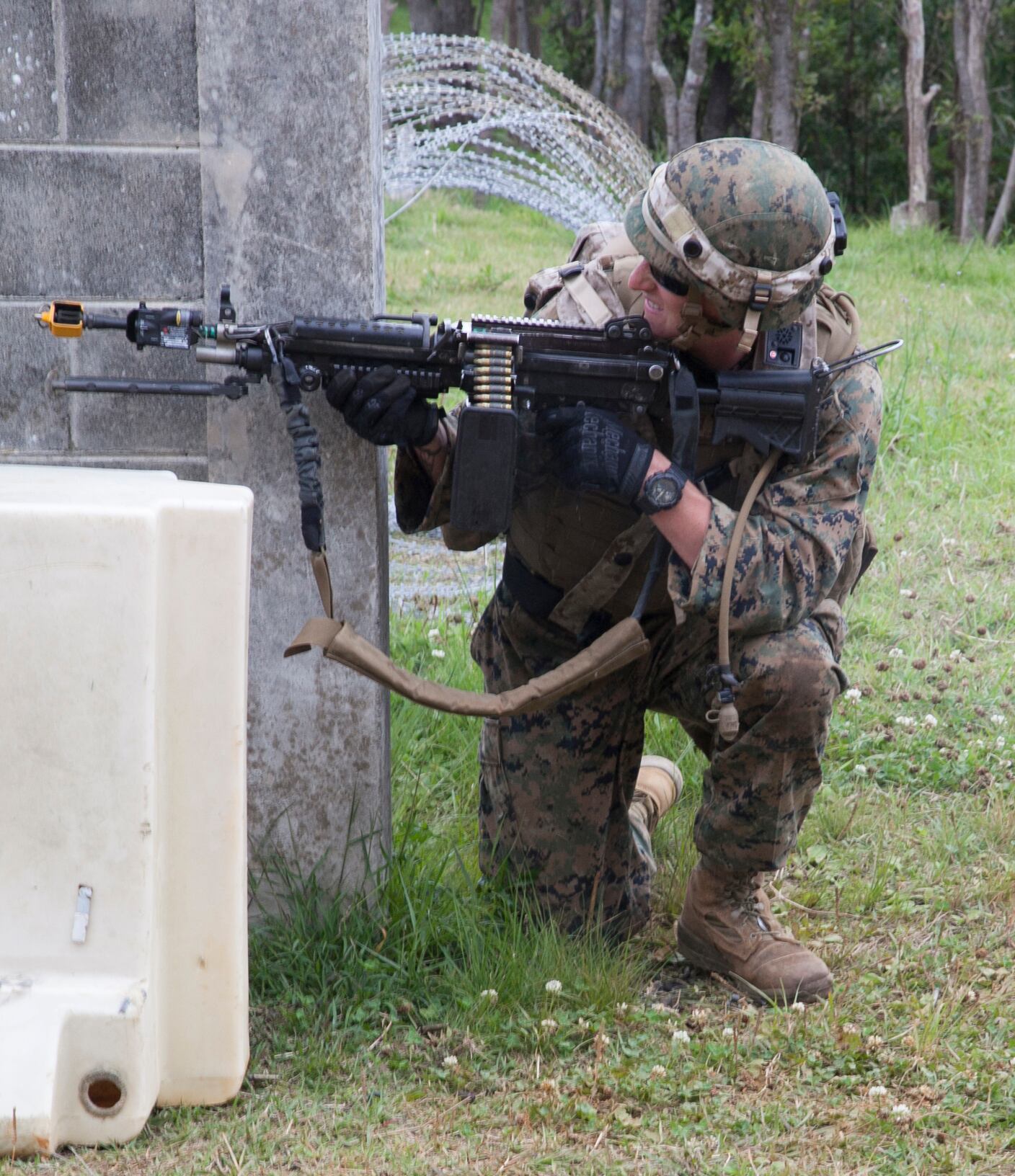After decades of using laser-type devices for shooting simulations and force-on-force tactical warfighting, the Marine Corps is asking for a new way to do fake shooting.
A recent request for information is asking the commercial industry to bring ideas to the Corps that would help it make simulated shooting more realistic for up to a battalion-size force and improve current systems.
Some versions of those systems have been in operation since Nintendo’s Duck Hunt video game was considered high-tech shooting and laser tag advertisements dominated Saturday morning cartoons.
This won’t hit every Marine Corps installation but many will have it.
RELATED

Based on the RFI, the systems would be employed “to provide turnkey instrumented exercises with After Action Review (AAR) at 29 Palms, Camp Lejeune, Camp Pendleton, MCB Hawaii, MCB Okinawa or MCB Quantico within 3 weeks of notice, as well as support additional exercises upon request at Camp Fuji, Japan, Marine Corps Mountain Warfare Center, MCB Yuma, and specified reserve locations.”
And the Marines are not doing this alone.
They will be leveraging the Army’s Live Training Engagement Component software. That’s a tactical training framework so that simulations can be on the same standards and work jointly with other services and potentially foreign partners.
One of the key cross functional teams that the Army formed last year included simulated training environment work. The goal is to incorporate better simulations for training at all levels, beginning in the design and procurement of future weapons and other equipment systems.
The Corps wants a system that would be able to simulate all weapons and vehicles typically seen in a battalion, which would include at least: M4/M16; M9 or sidearm, the M27 Infantry Automatic Weapon; hand grenades; rocket propelled grenades; Light Anti-Tank Weapon; 60mm mortars; 81mm mortars; Claymore antipersonnel mine; Mk-19 grenade launcher; Russian machine gun; AK-47 variants; M41 TOW; Javelin missile and the Carl Gustaf recoilless rifle.
It would distinguish between a hit, wound or miss and record information for after-action reviews.
Marine Corps Times first reported news of this initiative last year following an interview with then-program manager for Training Systems at Marine Corps Systems Command, Col. Walt Yates.
At the time, Yates described some of the shortfalls of using lasers when gauging accuracy and real-world effects.
“A laser is at the speed of light, and the bullet is not,” he said.
Yates previously said that though the current shooting systems are a generational change from old MILES, or multiple integrated laser engagement system, lasers have fundamental flaws for realistic battle scenarios.
For example, laser-based systems shoot line-of-sight, making arcing weapons such as mortars and grenade launchers more difficult to simulate. Lasers can also be deflected by light concealment such as tree leaves and thin walls.
And the number of troops and shooting ranges will change with new systems.
The first generation ITESS accommodated 120 Marines and opposition forces, the second generation expanded to 1,500 with a communication radius of 5 to 8 km. The third seeks to track up to 2,500 Marines, making it capable of battalion on battalion exercises envisioned by the commandant, Yates said in the November interview.
A new simulator must act more like a real bullet, requiring Marines to lead their moving targets, fire rifles on semi, burst and fully automatic modes and ensure the bullet travels in the realistic path, which is not perfectly line of sight, he said.
Todd South has written about crime, courts, government and the military for multiple publications since 2004 and was named a 2014 Pulitzer finalist for a co-written project on witness intimidation. Todd is a Marine veteran of the Iraq War.







